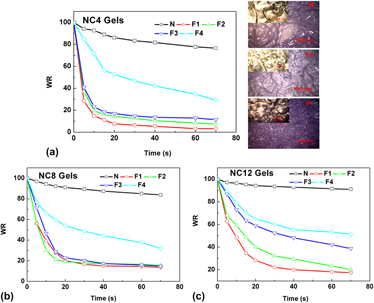Crossref Citations
This article has been cited by the following publications. This list is generated based on data provided by
Crossref.
Chen, Yi
Xu, Weijian
Liu, Wenyong
and
Zeng, Guangsheng
2015.
Responsiveness, swelling, and mechanical properties of PNIPA nanocomposite hydrogels reinforced by nanocellulose.
Journal of Materials Research,
Vol. 30,
Issue. 11,
p.
1797.
Strachota, Beata
Matějka, Libor
Zhigunov, Alexander
Konefał, Rafał
Spěváček, Jiří
Dybal, Jiří
and
Puffr, Rudolf
2015.
Poly(N-isopropylacrylamide)–clay based hydrogels controlled by the initiating conditions: evolution of structure and gel formation.
Soft Matter,
Vol. 11,
Issue. 48,
p.
9291.
Ma, Shuanhong
Yu, Bo
Pei, Xiaowei
and
Zhou, Feng
2016.
Structural hydrogels.
Polymer,
Vol. 98,
Issue. ,
p.
516.
Chen, Shiwei
Lu, Xuchen
Wang, Tizhuang
Pan, Feng
and
Zhang, Zhimin
2016.
Effect of reactive nanoclays on performances of PMMA/reactive nanoclay nanocomposites.
Journal of Wuhan University of Technology-Mater. Sci. Ed.,
Vol. 31,
Issue. 6,
p.
1193.
Strachota, Beata
Matějka, Libor
Sikora, Antonín
Spěváček, Jiří
Konefał, Rafał
Zhigunov, Alexander
and
Šlouf, Miroslav
2017.
Insight into the cryopolymerization to form a poly(N-isopropylacrylamide)/clay macroporous gel: structure and phase evolution.
Soft Matter,
Vol. 13,
Issue. 6,
p.
1244.
Bandla, Manjula
Abbavaram, Babul Reddy
Kokkarachedu, Varaprasad
and
Sadiku, Rotimi E.
2017.
Silver nanoparticles incorporated within intercalated clay/polymer nanocomposite hydrogels for antibacterial studies.
Polymer Composites,
Vol. 38,
Issue. S1,
Chen, Yi
Liu, Wenyong
Zeng, Guangsheng
and
Liu, YueJun
2017.
Microporous PDMAEMA‐based stimuli‐responsive hydrogel and its application in drug release.
Journal of Applied Polymer Science,
Vol. 134,
Issue. 38,
Strachota, Beata
Šlouf, Miroslav
Hodan, Jiří
and
Matějka, Libor
2018.
Advanced two-step cryopolymerization to form superporous thermosensitive PNIPA/clay gels with unique mechanical properties and ultrafast swelling-deswelling kinetics.
Colloid and Polymer Science,
Vol. 296,
Issue. 4,
p.
753.
Jin, Yuqi
Yang, Teng
Ju, Shuai
Zhang, Haifeng
Choi, Tae-Youl
and
Neogi, Arup
2020.
Thermally Tunable Dynamic and Static Elastic Properties of Hydrogel Due to Volumetric Phase Transition.
Polymers,
Vol. 12,
Issue. 7,
p.
1462.
Jin, Yuqi
Zhou, Mi
Choi, Tae-Youl
and
Neogi, Arup
2021.
Thermally Tunable Acoustic Beam Splitter Based on Poly(vinyl alcohol) Poly(N-isopropylacrylamide) Hydrogel.
Gels,
Vol. 7,
Issue. 3,
p.
140.
Kalkan, Birgul
and
Orakdogen, Nermin
2022.
Anionically modified N-(alkyl)acrylamide-based semi-IPN hybrid gels reinforced with SiO2 for enhanced on–off switching and responsive properties.
Soft Matter,
Vol. 18,
Issue. 24,
p.
4582.
Yang, Teng
Jin, Yuqi
Dahotre, Narendra B.
Wang, Zhiming
and
Neogi, Arup
2025.
Thermally tunable dispersive topology of hybrid acoustic meta-material lens with subwavelength resolution.
Advanced Composites and Hybrid Materials,
Vol. 8,
Issue. 1,
